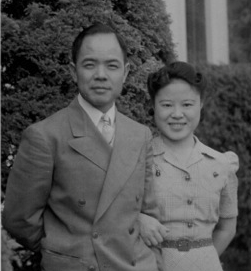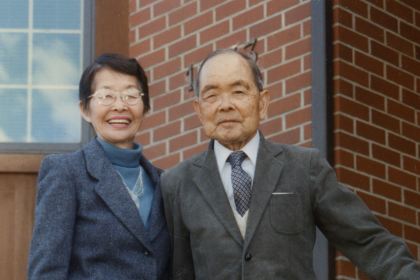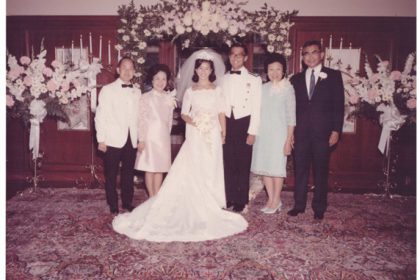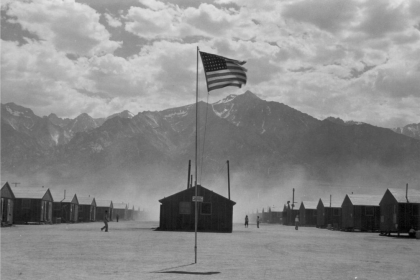Table of Contents
Robert Shiomi ended his life of 99years in 2nd May 2004 in Portland. Small article was posted in local Oregonian newspaper, and in a certain blog writes “Dr. Shiomi and his late wife Ruby broke one of Portland’s long-standing racial barriers” in his memory.
*「Robert Shiomi」 Isaac Laquedem blog 9th May 2004
http://isaac.blogs.com/isaac_laquedem/2004/05/robert_shiomi.html
When renovation of Shiomi House was staggering, I remembered grand-uncle Robert I met once in Sashima, and decided to review story of him. I had only been told fragments of his story from my mother and he was distant relative whom I hardly knew his story and personality.
I started my research on web without expectation, but found immigration slip of my great grandfather Saichi back from 1907, and got involved since then. I had not known that he had been to USA at all.
Furthermore, from listening to residents of Sashima, I found out that there were many immigrants to East shore of Canada from Sashima, and had sheer chance of encountering same aged relatives, living in Canada connected from 5 generation before at Sashima. I have only to admire the vertical connection with ancestors leading horizontal connection of present.
Robert seemed to be a local celebrity and quite a few references were left, but fragments of life of other ancestors found with references were also fruitful findings for me.
Arrived as wedding bride from Mihara at age of 19, my great grandmother Mann raised 2 sons alone after her husband Saichi migrated USA when she was 23. Both of her sons left the island in their teens so she held Shiomi alone for a long time. She was generous and was loved as “Sister o-Mann”
My great grandfather Saichi did not send much allowance after his migration, hardly worked and was always reading books after his return. I found lots of foreign books from old barn of Shiomi. On the other hand, island residents told me that he called Daigagura musician (Shinto music) into his garden, organized 8mm screen party and told interesting stories to children on Summer nights near port. There were children died at an early age.
Looking into family tree after knowing those episodes, each names in the tree looks like a title of drama. I have only to owe to all the ancestors who have lived in age of turbulence.
I have been writing footsteps in a notion of child who have found something interesting; “ Look, look what I have found”, but I would like to close the footsteps with this final article. If something new comes up, I would add little by little.
Thank you for all who has given me help, and thank you for all who has patiently read my amateur writings.
30th December 2017 Nobuko Nishimura
Translated by Ms. Yoko Seto
Table of Contents
Table of Contents
Robert Shiomi continuously supported Japanese exchange student and its number exceeds 30. Lots of the students are now gone and details remains unknown, but one of the students is Yoko Matsuoka, granddaughter of Soseki Natsume.
Ms.Yoko Matsuoka is a second daughter of Soseki’sfirst daughter, fudeko and Soseki’s apprentice, Joe Matsuoka. Soon after 2nd World War, she obtained scholarship to America and got acquainted with Robert Shiomi while studying at Oregon University for a year. Just before her scholarship ends, Robert offered his support and she continued her study and ended up being Professor Emeritus at university of Oregon.
In her book “America from grandchild of Soseki”*1, she wrote that she was able to continue her studies “thanks to kind successful Japanese American doctor”.
Robert attended her wedding on behalf of her father *2, and their relationship including their family, lasted for life. (photo 1,2). By the way, Yoko’s son, Ken McClain who has helped Shiomi House before its grand opening, came to Shiomi House with all 3 of his family and stayed 2 nights in July 2017, and reunited our friendship from our father’s generation.(Photo 3) In 2018, 100 years from Robert’s immigration, I am planning to visit Oregon.
photo1
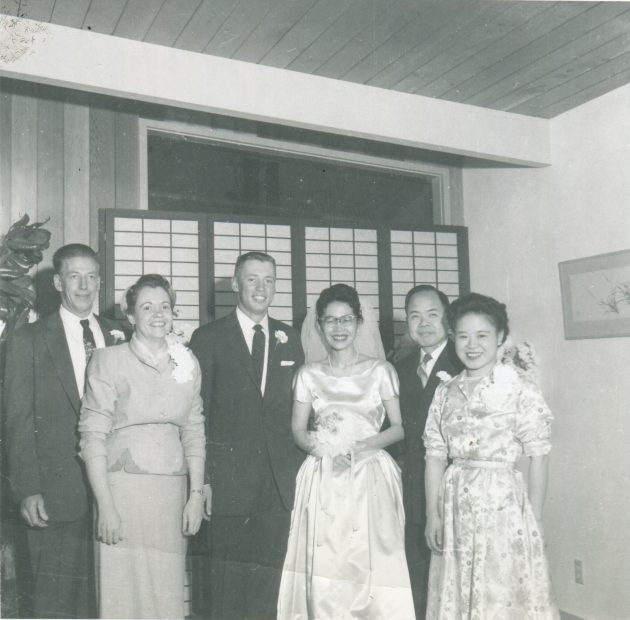
The wedding. Parents of McClain, the groom, the groom Robert McClain, the bride Yoko Matsuoka, Mr.and Mrs Shiomi.22nd December 1956 (presented by Ken McClain)
photo2
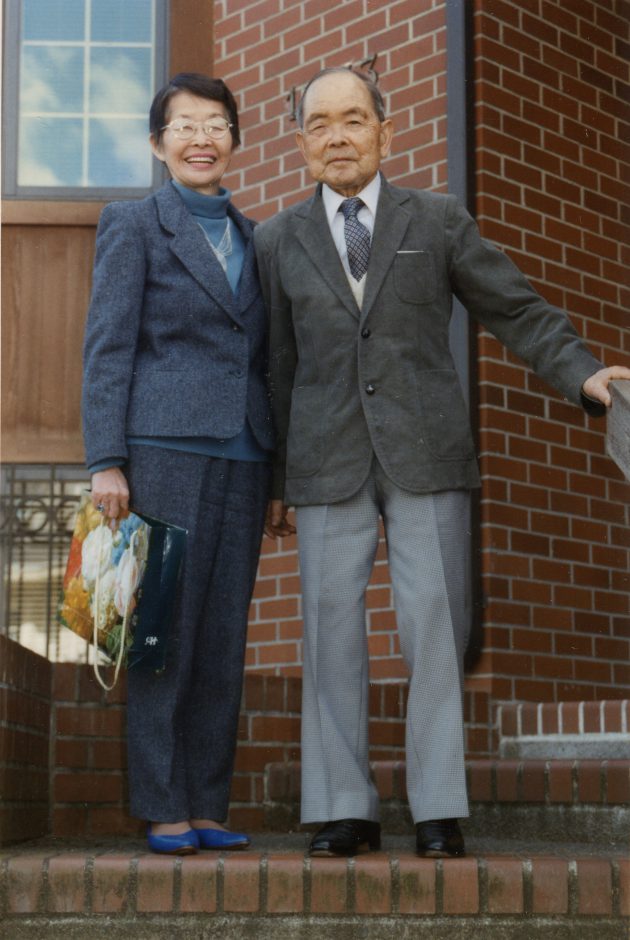
Yoko Matsuoka and Robert Shiomi. In front of University of Oregon’s Jordan Schnitzer Museum of Art around 1996 (presented by Ken McClain)
Furthermore, Robert recollected that he “took care” of Ms.Sadako Ogata. Her father, Toyokazu Nakamura, who has been a diplomat was assigned to consulate of Portland for 3 years since October 1932 (Showa 7)*4 and was acquainted with Robert back than.*5
Ms.Sadako, 5 year old at the time, entered Catlin gables school known with liberal educational policy even today, which is combined nursery to high school, and Robert later let both of his daughters study at same school. He also recommended his niece in Tokyo to study at Seishin University, alma mater of Ms.Ogata. Sadako must have been wise girl indeed.
In OREGON Encyclopedia, Sadako Ogata is listed as its famous alumni but she was only there for 3 years until she is 8 years old. This is an assumption but maybe Robert maintained her registration so she can return after the war.
I have inquired to school, and they confirmed that she is listed as graduate from the high school.
According to 25th November 1976 Oregonian (Photo 3) Robert Shiomi has been awarded for his long time dedication to promotion of better understanding between Japan and America, support of exchange students and cultural organizations. He did not let his fellow relatives on this, and even his niece, my mother did not know till she read the article. Simple man as he is.
photo3
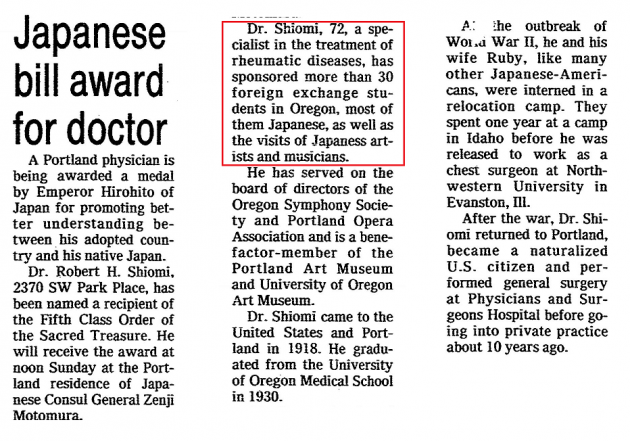
*1 「America from grandchild of Soseki”」 P17 Yoko Matsuoka McClain Shinchosha 1984
*2 Celebration of Life: YokoMcClain.org memorial site of Yoko Matsuoka McClain, administrated by Ken McClain
*3 United Nations High Commissioner for Refugees, President of the Japan International Cooperation Agency (JICA). Words of praise fall out for her. If you don’t know her, please google her.
*4 Sadako Ogata This world with endless war NHK 2014
*5 Story from my mother. Toyokazu Nakamura was recipient of wedding certificate of Robert and Ruby, submitted to Japanese consulate of Portland. In Portland, where Nikkei are few, it is not surprise for diplomat with small children to have close relationship with Japanese doctor of same generation who offers house visit. I have boldly inquired via JICA, and was told that she does “remember the name, but was too young to remember more” by secretary. I would like to take this opportunity to apologize for the trouble.
Table of Contents
Table of Contents
America is known to have culture of nobles oblige and for those who performs it are rewarded by tax reduction, but that of Robert Shiomi gives impression that it is more than obligation.
According to my mother, Robert’s niece, Robert sometimes muttered that “when one donates consistently, one cannot say “not this year” and hence there are years I have to borrow some money to donate”, but I did not understand details. It seems that his donation has 3 types. 1, exchange students support, 2, Orchestra or Opera support and 3, donation for cultural heritage. As for No3, below are list of donation from Robert Shiomi obtained from Jordan Schnitzer Museum of Art (JSMA) annexed to University of Oregon.
1. anonymous/Head of Buddha/Gandharan, mid-2nd cenury, Kushan dynasty
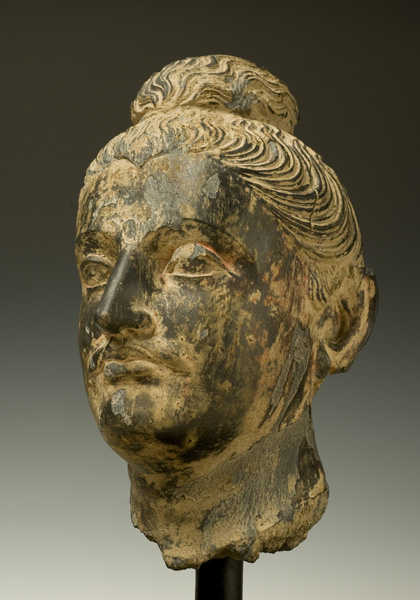
2. anonymous/Standing Arya-Avalokitesvara(sho Kannon bosatsu)/Japanese, Heian period(794-1185)
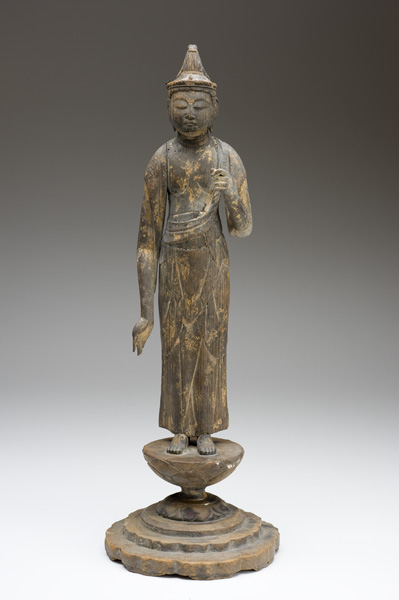
3. anonymouse/Welcoming Descent o Amitabha Buddha(Amida Nyorai)/Japanese, Nambokucho(1336-1392)
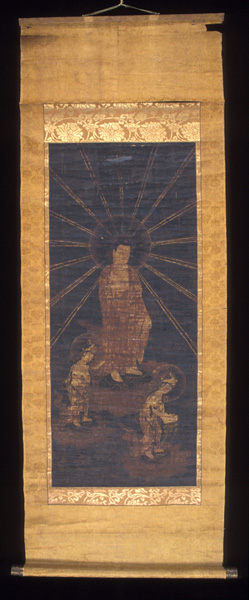
4. anonymous/Thirteen Buddist Deities (Jusan butsu)/Japanese, Nambokucho(1336-1392)
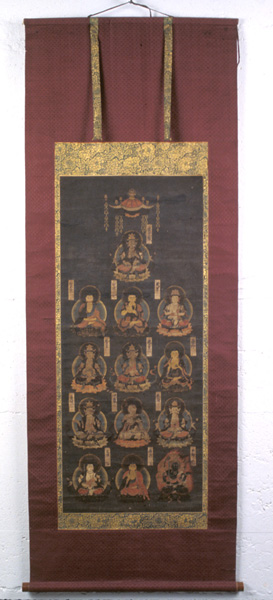
5. Tosa no Tsunetaka/Sugawara no Michizane in Formal Court Attire (Sokutai Tenjin)/Japanese, Kamakura(1185-1333)
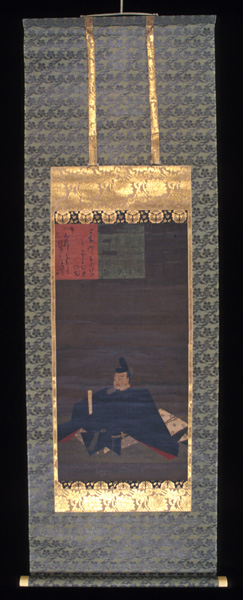
6. anonymous/Pilgrimage of Priest Gyogi/Japanese, Momoyama period (1537-1615)
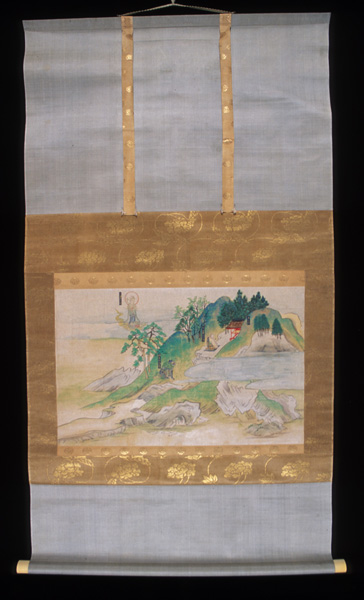
7. Formerly attributed to OGATA Korin/Lotus (Jun type)/Japanese, Edo (Tokugawa) period (1615-1868)
8. Wong Lui-Sang/Moon Setting, Crows Cry in the Frost-Filled Sky/Chinese, 1963
9. KANO Yasunobu/The Crafts of Kyoto/Japanese, Edo (Tokugawa) period (1615-1868)
10. Unknown/Shakyamuni and Sixteen Protective Deities (Shaka juroku zenshin) /Japanese, Muromachi period (1336-1568)
11. KANO Yukinobu (Utanosuke) /Rice Cultivation/Japanese, Muromachi period (1336-1568)
12. anonymous/Banana Plant and Peonies/Japanese, Momoyama period (1568-1615)
13. anonymous/Plum and Pine/Japanese, Momoyama period (1568-1615)
14. Ganku/Tiger/Japanese, 19th century
15. TOSA School/Scenes of the Yoshiwara/Japanese, Edo (Tokugawa) period (1615-1868), 17th century
16. RENZON Kishi/Album of Assorted Landscape, Figure & Animal Designs/Japanese, 19th century
17. Welcoming Descent o Amitabha Buddha(Amida Nyorai) with Bodhisattvas Avalokitesvara (Kannon Bosatsu) and Mahasthamaprapta (Seishi Bosatsu); Amida sanzon raigo zu/Japanese, Kamakura period (1185-1333)
18. ISHIDA Yutei/Chinese Imperial Palace in Mountain Landscape/Japanese, Edo (Tokugawa) period (1615-1868)
19. Ganku/Cranes and Rushes, Cranes and Pine/Japanese, Edo (Tokugawa) period (1615-1868), early 19th century
20. KISHI Renzan/Dragon and Tiger/Edo (Tokugawa) period (1615-1868), circa 1850
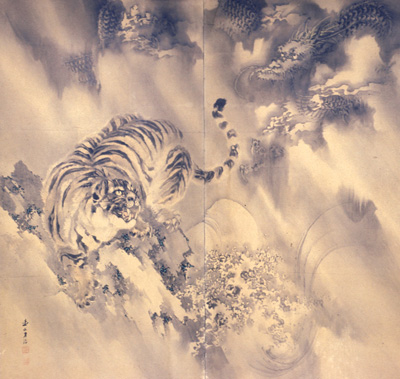
21. anonymous/Views along the Kamo River in Kyoto (Rakuchu rakugaizu byobu)/Edo (Tokugawa) period (1615-1868), 17th century
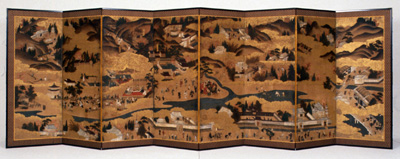
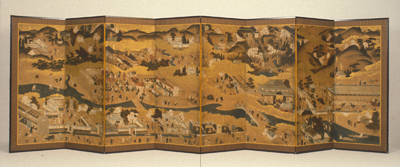
The best would be “21.Views along the Kamo River in Kyoto”, donated in 1994, the last years of Robert 21. It is a pair of folded screen called “Shiomi screen” . I happened to find the existence of this screen by the Archeb of the master thesis of Oregon University. I talked to Ms. Heather Hanson, the author several times through LinkedIn. All thanks to internet.
The master thesis of Ms. Hanson
Collections of Jordan Schnitzer Museum of Art (JSMA)
Table of Contents
Table of Contents
After the war, life of Robert Shiomi back in Portland was American dream itself.
South Vista Avenue, East of Washington park where Robert restarted his practice as well as his home, was restricted area and blacks and Asians (usually called “Orientals” in the covenants) were prohibited to live there, except as servants. Details is unknown how Robert managed to buy his house in that area, but it is told that it was historical event that broke one of Portland’s long-standing racial barriers.* The house still stands in Portland, and from photos from real estate web page, there is a big cherry blossom tree in back yard, probably transported from Japan, symbolizing Robert’s nostalgia. Tour bus stopped at the yard during its bloom (photo1)
photo1 Cherry blossom in back yard
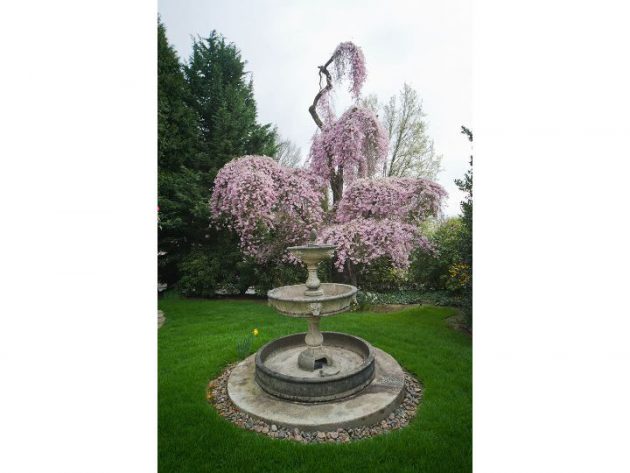
Robert’s daughters, Susan and Carol went to Catlin gables school known with liberal educational policy. In year book it is interesting to see Susan, though feature is Japanese, her expression shows open and natural American girl(Photo2). Carol went to Stafford University and now works in IT related company in Los Altos, off California with her husband.
photo2 1958 yearbook of Catlin Gables School (Second left of front line is Susan)
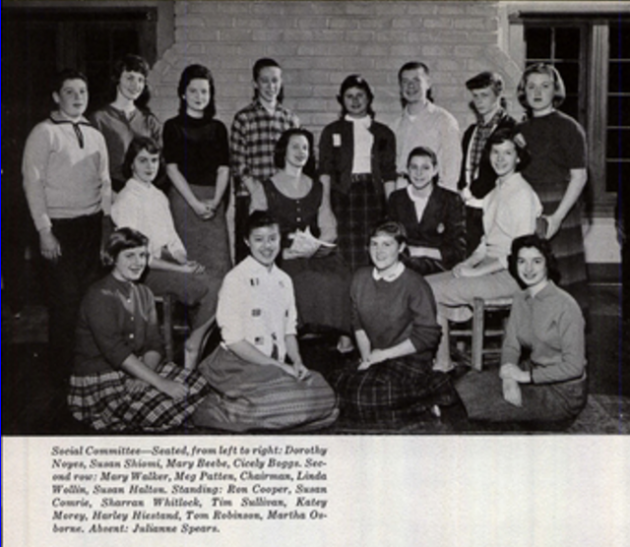
Incidentally, Catlin gables school is alma mater of Sadako Ogata, former United Nations High Commissioner for Refugees and current president of JICA(Japan International Cooperation Agency).She went to Catlin Hillside school, now Catlin Gables school between 5 -8, when her father Toyoichi Nakamura was general consulate of Porland from 1932- 1935. Robert said that he was friends with Mr. Nakamura, and he must have been charmed by Sadako since he put his daughters in same school as young Sadako and recommended Seishin University to his niece (Mother of Nishimura) in Tokyo. Sadako must have been wise girl indeed. Robert narrated that he “took care of Sadako” until his late years, but the truth remains unknown.
Robert has strong belongings to his Alma Mater, Oregon university and he wore white carnation and green”O” proudly on his collar and drove his car Packard 1949 model to Eugene, for football game with his family. (photo 3)
Photo3 Packard 1949 model(From Wikipedia Packard)
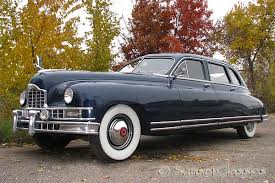
Later the family moved their house to South West Parkplace nearby. They dismantled a mansion of a baron and made it their home. Their daughter Carol provided her wedding photo at their home. (Photo 4) Ken McClain, grandson of Soseki Natsume who was their family friends and attended their wedding recalls that “lots of attendants and long virgin road that stretched from fountain in the garden to living room looked like a church or huge banquet”.
Photo 4 Carol’s wedding celemony
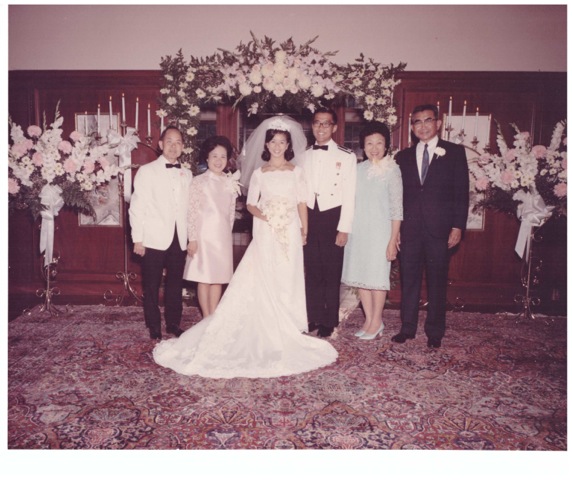
Robert used lots of his spare time in gardening and was often mistaken as a gardener.
*“Robert Shiomi” Isaac Laquedem Blog 9th May 2004
**Address is 1111 SW Vista Avenue, and they moved to 2370 SW Park Place. The two houses can be browsed in multiple real estate site and google map.
Table of Contents
Table of Contents
In 1930 Robert Shiomi graduated medical department of University of Oregon, and started intern in NY with rosy future. However, the world was moving towards world war, starting from Manchurian Incident in 1931, resulting the Sino‐Japanese war in 1937. May 23rd 1941, when relationship between Japan and America could not get better, Robert sponsored Dr. Shiomi scholarship and announced it in local paper Oregonian (Photo1) under name of Portland chapter of the Japanese American Citizens league (JACL) in which he was president of.
“It will sponsor two $100 tuition scholarships, one to be given at Oregon State college and one at the University of Oregon.”
“”For the benefit of any student, of whatever racial background”
“One requirement is that a student, to be selected, must have shown an effort to promote friendship between American citizens of the two races”
The winner of the scholarship that closed its application in 10th June remains unknown, but despite Robert’s effort for peace using his own purse, as history shows, Pacific War broke out 8th Dec of the same year.
Photo 1 
Under slogan of “Remember Pearl Harbor”, boycott of Japanese American became fierce and in Feb 1942 president Roosebelt issued an executive order and Japanese incarceration begun.
Oregonian of 23rd May of the same year reports that Robert Shiomi took charge of the hospital at Portland Pacific internment reception center (Assembly center), one of the 16 reception centers opened at the time. 5 photos below shows Dormitory for single male (right below), cafeteria and newspaper reporter, (Left below), Hospital within the center (right above), Robert Shiomi (upper center) Kate Smith, popular singer at the time, campaigning wartime bonds (upper left)(Photo2)
写真2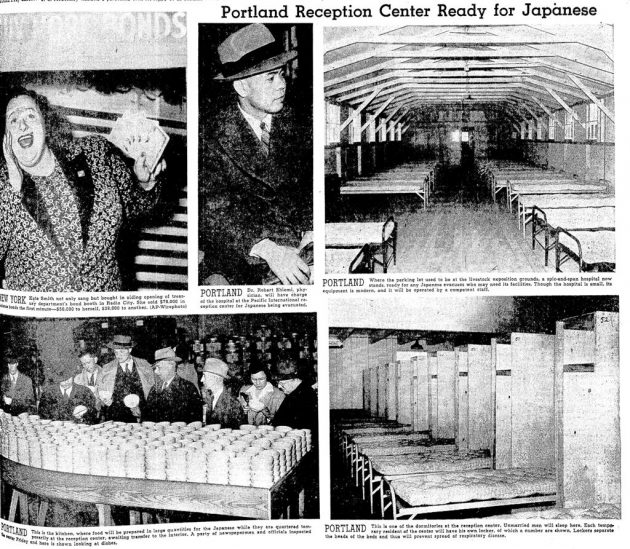
According to Japan internment record, on 9th September 1942, Robert was transferred to Minidoka internment camp in Idaho state along with his wife Ruby (Sachiko) and their 6 months baby daughter Susan, then on 26th January 1943 to Manzanar Internment camp (photo 3, 4) Further on 5th May 1943 Robert was transferred to Chicago alone and on 6th June of the same year Ruby and Susan was transferred to Denver, Colorado.
Not much is known why they were transferred to different location and Robert hardly talked about his time in the camp. Photo is left of Manzanar internment camp in archive which shows Robert treating young boy.* In the archive lots of smiling photos of Japanese in the camp is left but one can only wonder how hard it must have been to be taken in with single suitcase and leave his/her life on hands of US military.
Photo3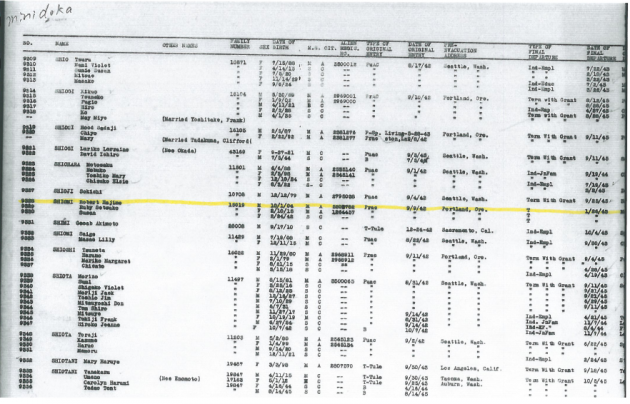
Records of Japan internment camp of Minidoka. Internment number, name, birthday, sex, family number, marriage state, internment date, left date etc. is recorded.
Photo 4
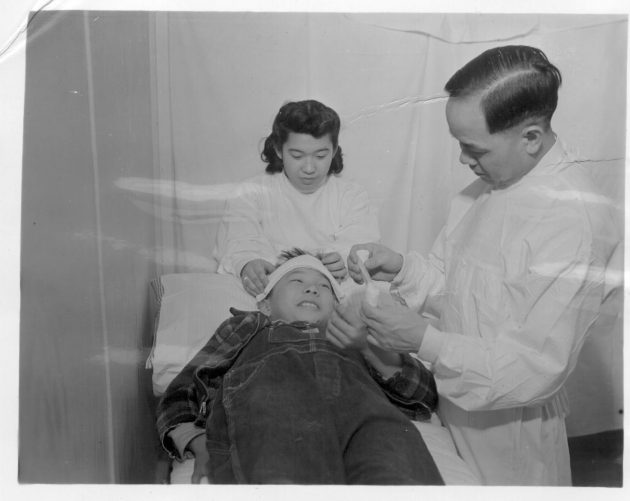
*Robert Shiomi treating young boy at Manzanar camp.
A small article in Oregonian reported that Robert Shiomi returned to Portland and started his practice on 25th May 1946, 9months after end of the war (Photo5).
Photo 5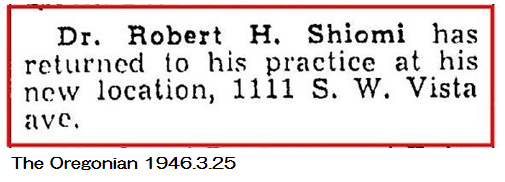
S.W.Vista Avenue was high-end area in Portland and at that time, apart from servants, non-white race was restricted to work by law. It was a small article but was big event to tear down racism in Portland.
Table of Contents
Table of Contents
Robert graduated Failing Elementary School on 1920, then went to Benson High School(photo 1). His name was shown in several articles of OREGONIAN, local news paper.
Photo 1. 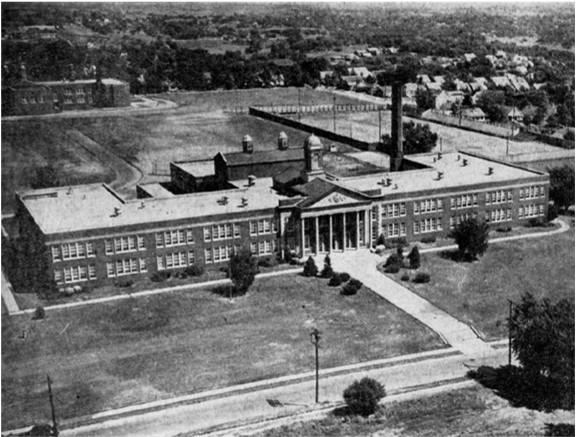
<Radio club Mar 3, 1922>
Twelve new members were voted into the Radio club at the last meeting on March 7. They are: Floyd Robinson, Grenn Hoover, Darwin Marvin, Leslie Brennan, W. C. Stuart, Percy Yost, Ralph Peterson, Clyde Blomgren, Richard Oswad, Ed Bell, Robert Shiomi and Joseph Miller.
Their older members of the club have started a series of lectures on the theory of wireless telegraphy at the meetings. A question box has also been started. Rechard Settlerstrom and Willard Barzee are now constructing and setting up a receiving set. This set will be installed in the club room when it is completed. The club constitution is being revised by Murice Saelens, William Burke and John Smith.
Shows afford Amusements for pupils of citi high schools (The Sunday Oregonian 19,Mar. 1922)
<The Benson Tech Camera club Nov. 11, 1922>
The Benson Tech Camera club held their regular meeting after school on Friday, November 10 at which time they proceeded to select a suitable emblem in the way of a pin which would represent the club in the most satisfactory manner.
It was decided that the best design was that of an open miniature folding camera of kodak, upon which was emblazoned the letters T.C.C. Holden LeRoy was appointed to investigate merits of various photography magazines and make a report on the same at the next meeting.
The new dark room schedule has just been completed and is now being enforced. By this schedule each member is allotted a certain amount of time to use the dark room each week for he purpose of developing or printing his own or the club’s pictures.
A good portion of the meeting period was devoted to the talking over of the photography contest now in progress among the club members.
Robert Shiomi was appointed clean and straighten up the dark room
Multitude of affairs keep pupils of high schools busy (The Sunday Oregonian 19, Nov. 1922)
Joining Radio club and Camera club shows he was a curious boy.
He was an only Asian boy in both of Radio club and Camera club. He seems not to hesitate but enjoy his school days of good old age of America.(Photo 2)
Photo 2(Second right of Second front line seems to be Robert.)
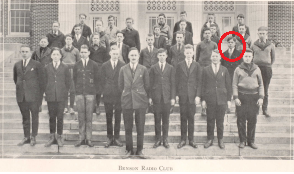
After graduated high school, he attend to medical school of University of Oregon. Father Saichi seems to back to Japan, Carol, Robert’s daughter said he could afford his tuition by working as a houseboy. There are many students enjoying their college life in the yearbook of University of Oregon 1930, but he might have no time to spent like as club activities. He worked as intern in New York after graduate medical school. (Photo 3)
Photo 3
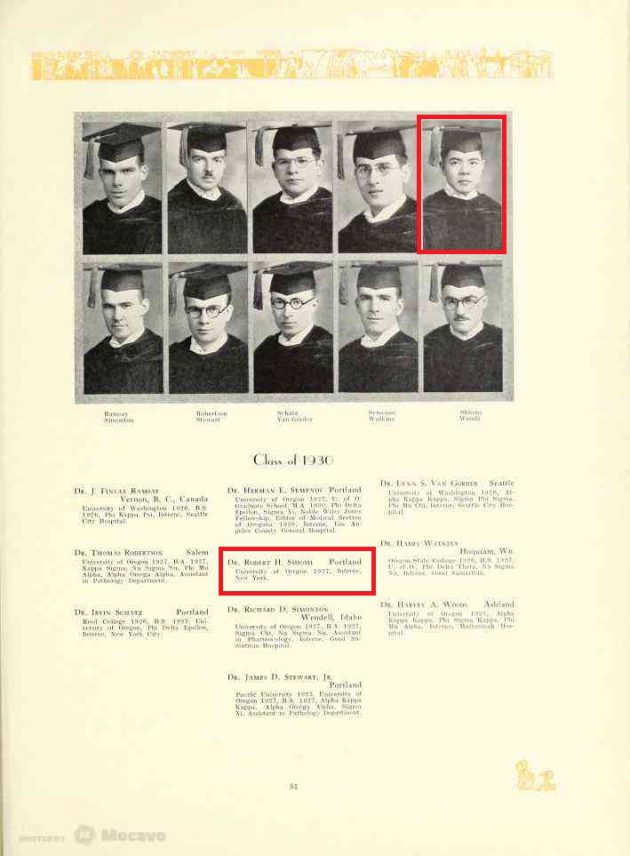
We can find Robert got BA of College of Literature, Science and the Arts and School of Medicine, Doctor of Medicine in The University of OREGON Bulletin 1930. Those may effect his contribution to the museum, orchestra, opera later.
Table of Contents


























